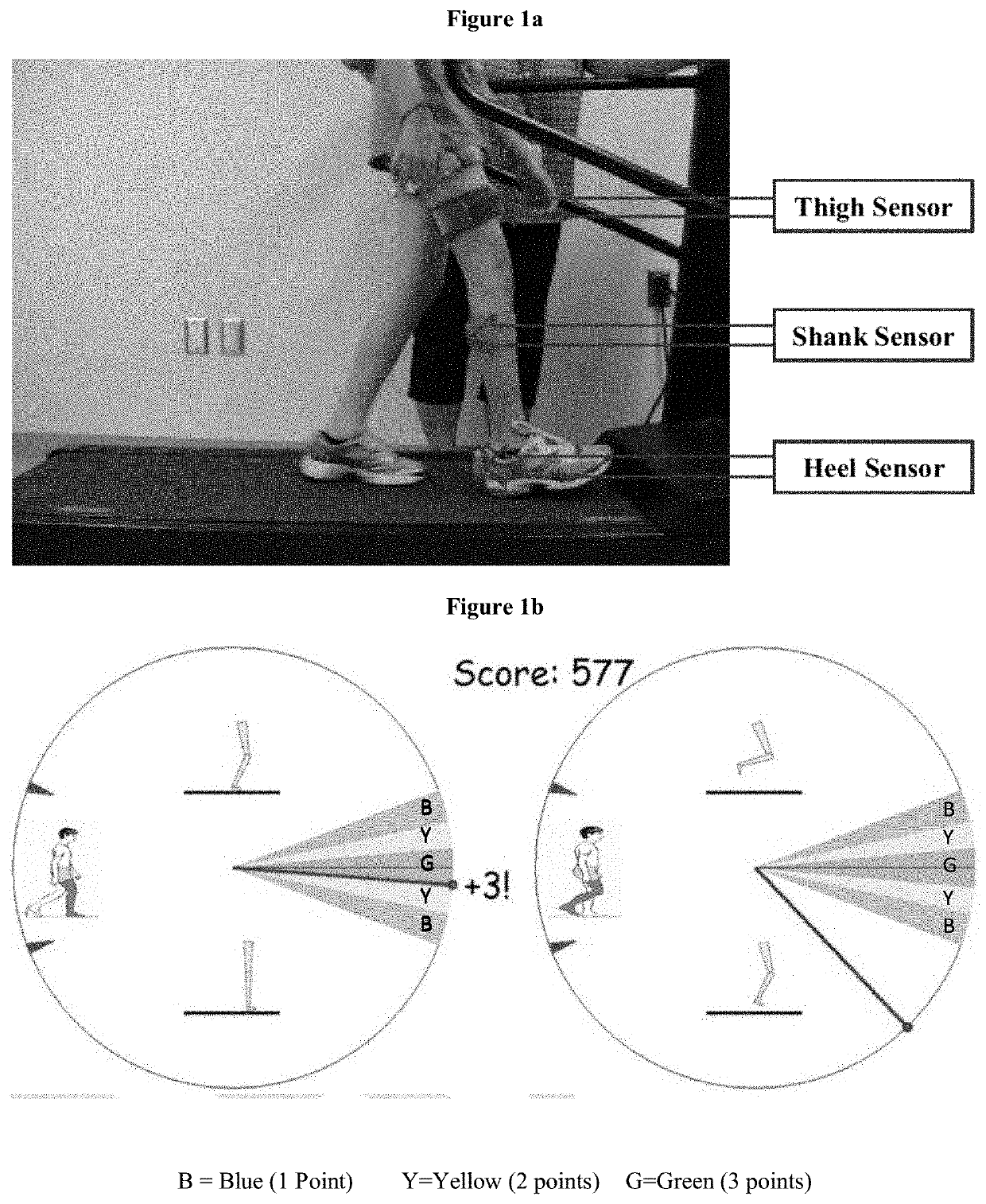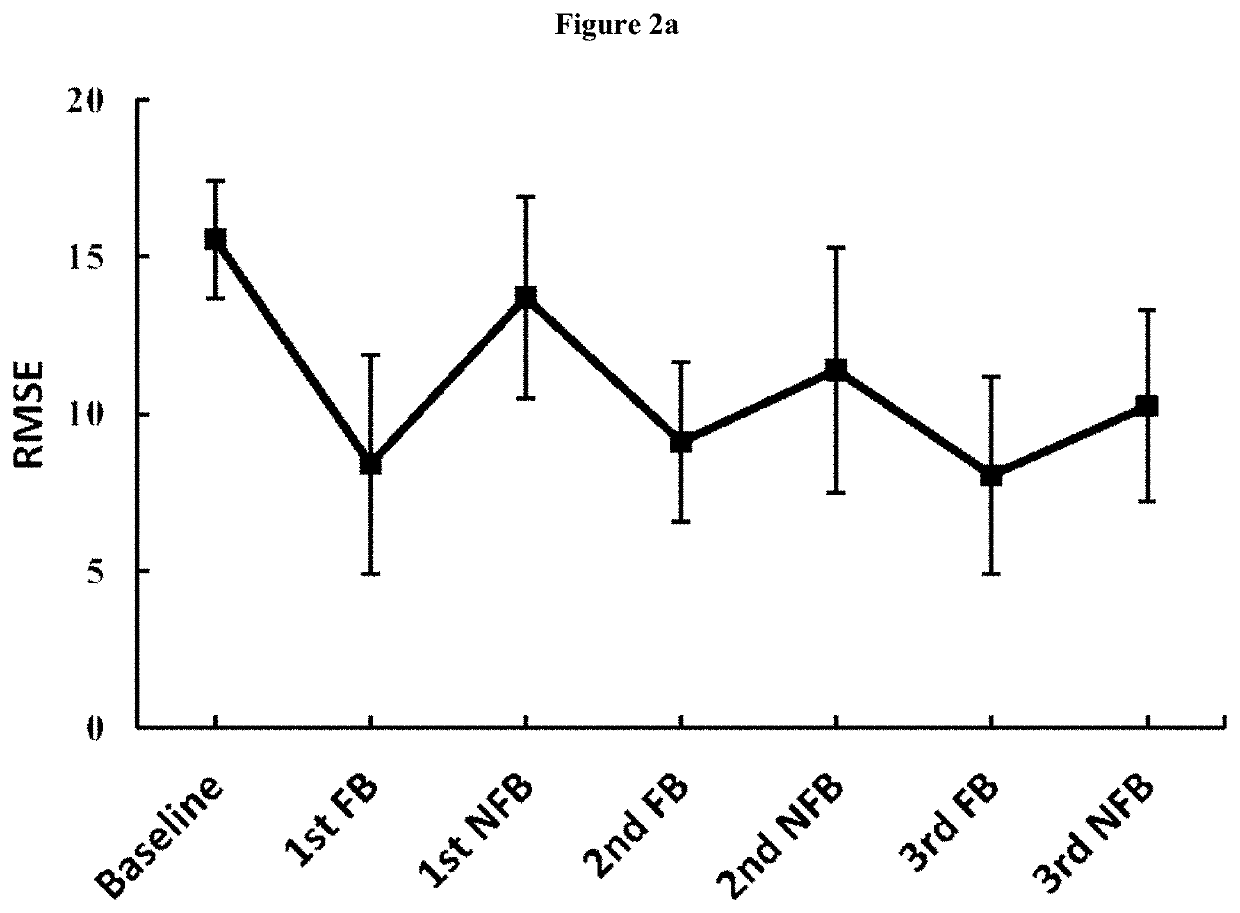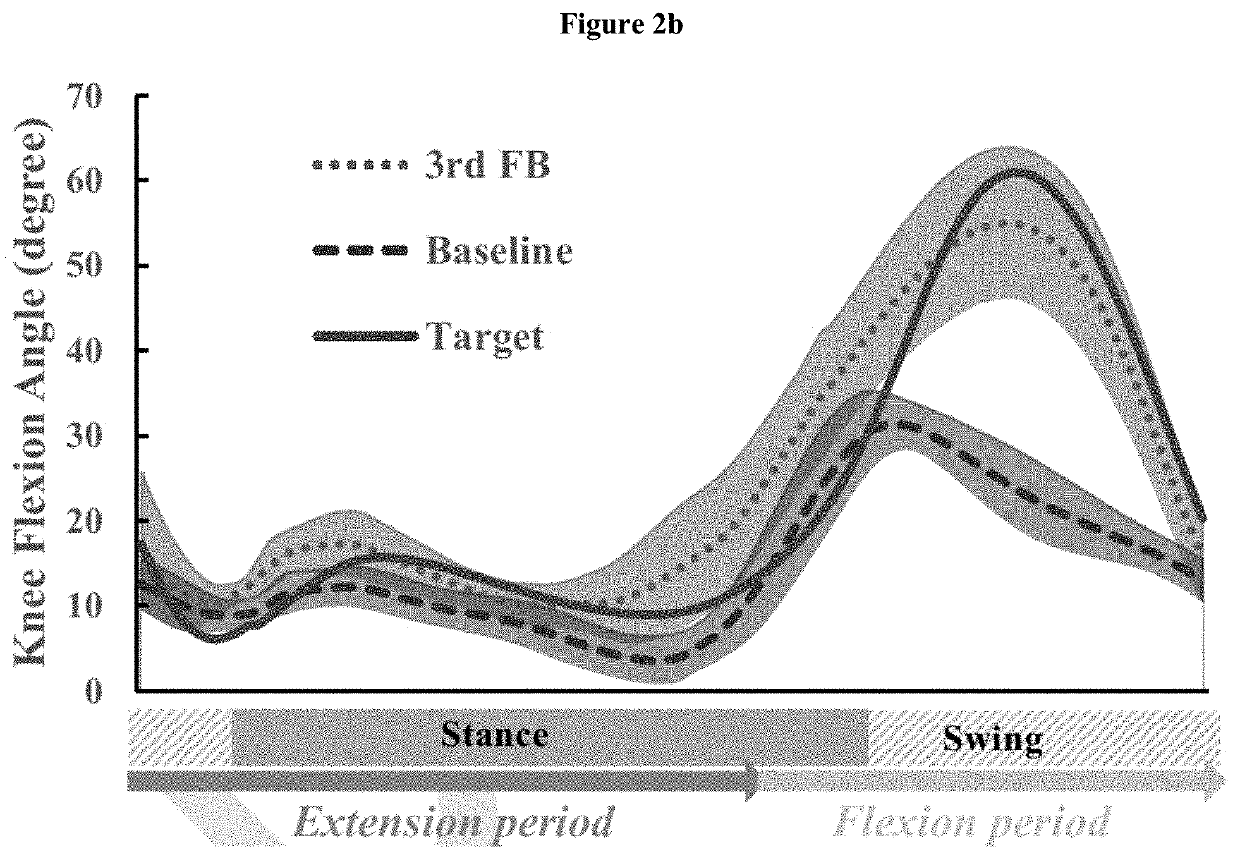Feedback systems and methods for gait training for pediatric subjects afflicted with gait disorders
a gait disorder and gait training technology, applied in the field of gait training systems and methods for pediatric subjects afflicted with gait disorders, can solve the problems of reducing velocity, affecting gait function, and deviations from normative gait that have severe consequences for gait function
- Summary
- Abstract
- Description
- Claims
- Application Information
AI Technical Summary
Benefits of technology
Problems solved by technology
Method used
Image
Examples
example 1
The Development of a Real-Time Pattern-Based Kinematic Feedback Gait Retraining Platform
[0077]Rehabilitative biofeedback motor training enhances task-specific practice by augmenting disrupted native feedback, thereby promoting modifications to feedforward control strategies and reduction of variability in performance. To motivate children's motor learning with precise cues towards targets, a wearable sensor based visual kinematics feedback platform was developed and it was found that the maximum knee flexion patterns of typically developing children were redirected to the target patterns in response to the feedback. The hardware requirements and setup time of the feedback platform are much lower than those for motion analysis system or virtual reality environments. The platform works with conventional treadmill or overground walkway, which is also suitable for community or home setup. The feedback prototype described herein provided a feedback signal driven by the error across the w...
example 2
Two Needle Gait Feedback
[0089]The system described in this example processes signals from 3 inertial sensors (IMU) placed on one limb and provides two feedback needles and scoring functionality. The system can also be run in a measurement mode. FIGS. 3-6 are related to this example.
[0090]Measurement of Real Time Angle Time Series:
[0091]This feedback method measures one anatomical angle, specifically, knee flexion angle. Either the right or left leg must be chosen. This angle is measured in real time using two inertial measurement units (IMUs) placed on the leg (See FIG. 4).
[0092]IMU Based Knee Flexion Angle:
[0093]The knee angle measured by the IMUs is defined as the difference between the thigh and shank sensors' ‘Roll’ rotation. Each sensor's ‘Roll’ is defined as the rotation on the longitudinal axis of the sensor. The thigh sensor is located on the anterior aspect of the thigh midway from the patella to the anterior superior iliac spine (ASIS); it is longitudinally oriented perpen...
example 3
Gait Patterns and Feedback Provided
[0125]This example provides gait patterns a subject may have and examples of feedback that may be provided to the subject in response to these gait patterns. This feedback is expected to provide treatment to the subject by allowing for the subject to correct his or her gait based on data provided by the system of this invention.
[0126]FIG. 7b shows a gait pattern with increased flexion at initial contact. Whereas in the normative gait pattern the knee is almost fully extended at initial contact (0% gait cycle), in this pattern the subject's knee remains bent. In the feedback displays, the extension phase feedback needle is indicating excessive flexion and guiding the subject to extend the knee more during this phase, whereas the cue from the flexion phase needle is indicating that the pattern here is normative. This gait pattern is seen in some children with hemiplegic cerebral palsy.
[0127]FIG. 7c shows a gait pattern with generalized decrease in kn...
PUM
 Login to View More
Login to View More Abstract
Description
Claims
Application Information
 Login to View More
Login to View More - R&D
- Intellectual Property
- Life Sciences
- Materials
- Tech Scout
- Unparalleled Data Quality
- Higher Quality Content
- 60% Fewer Hallucinations
Browse by: Latest US Patents, China's latest patents, Technical Efficacy Thesaurus, Application Domain, Technology Topic, Popular Technical Reports.
© 2025 PatSnap. All rights reserved.Legal|Privacy policy|Modern Slavery Act Transparency Statement|Sitemap|About US| Contact US: help@patsnap.com



